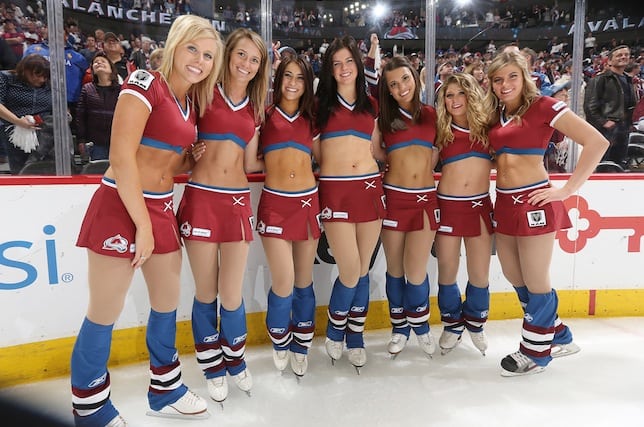
Hey NHL – let's treat women as equals and ice the ice girls
The Florida Panthers recently discontinued their cheerleading team – and columnist Adam Proteau says the rest of the NHL should follow suit and stop objectifying women.
 Hey NHL – let's treat women as equals and ice the ice girls
Hey NHL – let's treat women as equals and ice the ice girlsThe hockey world has made great leaps and bounds in social awareness issues in recent years: the anti-homophobia You Can Play Project was embraced by players and teams, and racist epithets hurled at certain players are met with increasing disgust from the majority of fans. But there are still some areas in which the sport – and in particular, the NHL – can do better. One of them is in eradicating the misogyny, explicit and casual, that exists in the sport.
And one of the easiest places to start is by getting rid of half-dressed ice girls.
This issue isn’t about the cheerleaders themselves. It’s about what we ask them to do under the guise of “entertainment.” We ask them work for next to no money in frigid arenas with their shoulders, midsection and/or legs exposed. We ask them to objectify themselves – to be ogled and leered at by strangers – and never stop smiling. We ask them to reduce their contributions so that they’re little more than eye candy.
And really, why? What purpose does it serve? Nobody has demonstrated teams that employ ice girls sell more tickets than teams that don’t. Nobody leaves a game and says, “The best part of the night didn’t have anything to do with the action on the ice – it was when that cheerleader jumped up and down in co-ordination with other cheerleaders and said something positive about the team!”
More importantly, let’s look at what the presence of ice girls does to the paying female customer.
When I asked female Twitter followers how the NHL could better engage them as fans, there were five common answers, including: hire more women in hockey positions (and hockey media), better sizing options for women’s jerseys and merchandise, a de-emphasizing of the color pink (or at least more non-pink jersey choices), the elimination of ice girls, and the key answer – don’t market specifically to women, and don’t do anything to make them feel like “The Other.”
That’s worth emphasizing. Hockey, like all sports, is about the tribe – about “Us” vs. “Them” – and anything that makes one section of the tribe feel different from the larger group is bound to have a negative effect on that section. That’s what female fans are up against. And that’s why things like ice girls are a problem. When women have paid their money – the same amount male fans pay – and are confronted with an amped-up representation of their sexuality, they’re going to feel self-conscious and their entertainment experience will suffer.
If you’re a man reading this and thinking, “C’mon, Proteau, why can’t I look at a pretty girl who’s trying to drum up excitement in the crowd?”, ask yourself if you’d be good with a group of well-built, shirtless men wandering through the arena. To ask the question is to answer it: there’s no way it will ever happen, because one gender would be uncomfortable with it. And therein lies the unavoidable problem with ice girls – their mere presence suggests one gender’s opinion matters less than the other’s.
In late July, the Florida Panthers – a team that has struggled to attract fans – announced they’d be discontinuing their “Lady Panthers” cheerleaders. Good for them. If they don’t need scantily clad women to sell tickets, no team does.
There’s still a place for attractive young women in hockey. They can be ambassadors without having to show skin. And by not requiring them to be in various states of undress or to play up their sexuality, the NHL and hockey world would tell all women the best thing they could:
You’re not female fans. You’re just fans.
This feature appeared in the September 15, 2014 edition of The Hockey News magazine. Get in-depth features like this one, and much more, by subscribing now.
